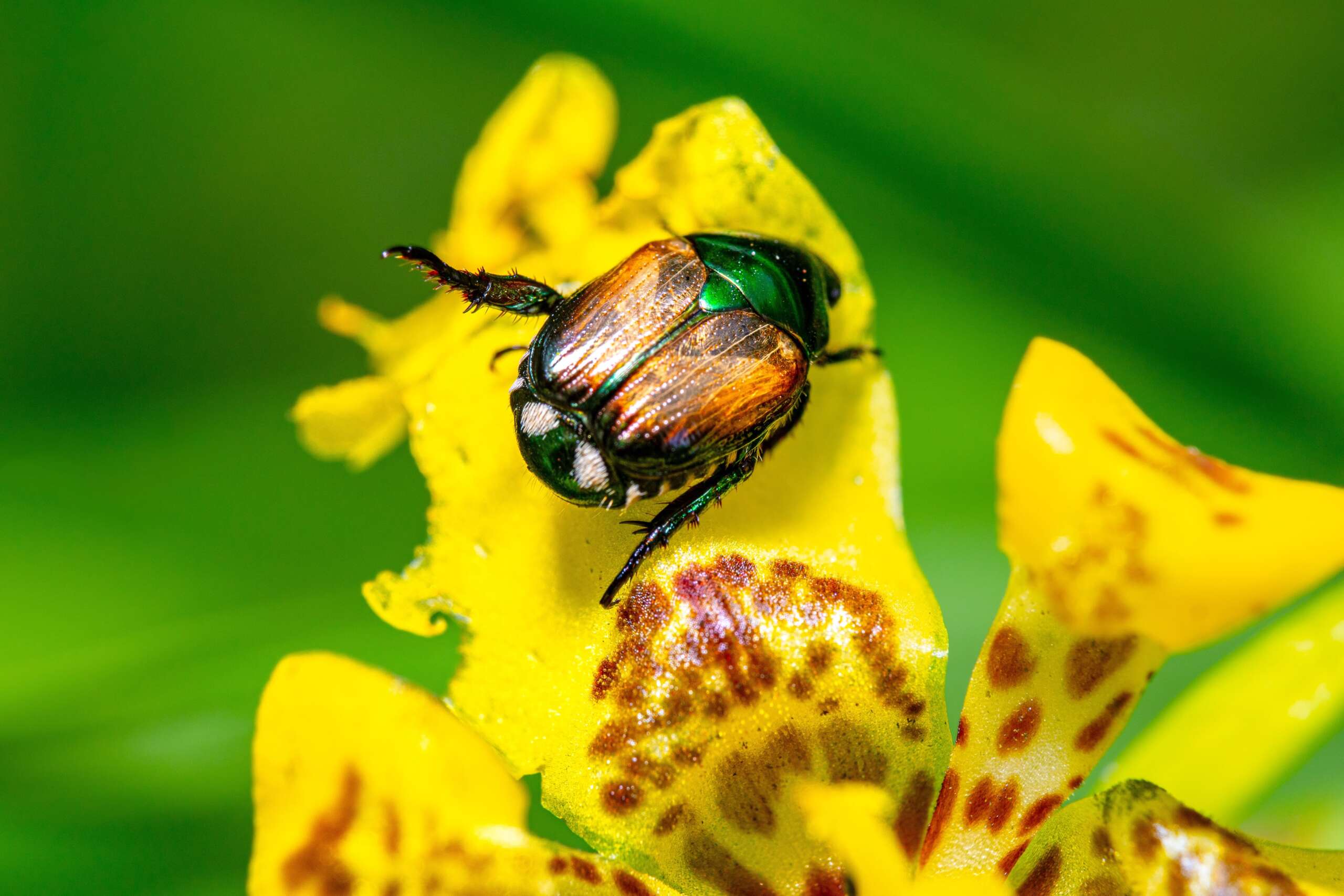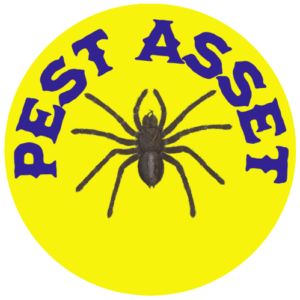
The Ultimate Guide to Japanese Beetles in Northeast Ohio: Protect Your Garden

Table of Contents
Introduction: The Japanese Beetle Invasion
Japanese beetles might be small, but they can cause big trouble in your garden. These shiny green bugs love to munch on your plants, leaving behind damage that can make any gardener cringe. In this guide, we’ll help you understand these pests and show you how to keep them away from your precious plants.
Getting to Know Japanese Beetles
What Are Japanese Beetles?
Japanese beetles (Popillia japonica) are invaders from abroad. They first came to the United States in the early 1900s, probably hiding in some plants shipped from Japan. Since then, they’ve spread across much of the country, including Northeast Ohio.
These beetles are easy to spot:
- They’re about half an inch long
- They have a shiny, metallic green body
- Their wing covers are coppery-brown
- They have five white tufts of hair on each side of their body
The Life of a Japanese Beetle
Japanese beetles go through four stages in their life:
- Egg: Adult females lay eggs in the soil in mid-summer.
- Larva (Grub): The eggs hatch into grubs that live in the soil and eat grass roots.
- Pupa: In spring, the grubs turn into pupae.
- Adult: Adult beetles emerge in late spring or early summer.
The whole cycle takes about one year. Adult beetles live for 30-45 days.
Spot the Damage: How to Know If You Have Japanese Beetles
Japanese beetles can eat over 300 kinds of plants! Here’s how to tell if they’re in your garden:
- Skeletonized leaves: They eat the soft parts of leaves, leaving behind only the veins.
- Damaged flowers: They love to eat flower petals, especially roses.
- Beetles in groups: You might see lots of beetles gathered on one plant.
- Damaged fruit: They can also eat the skin of fruits like raspberries and peaches.
For more detailed information on Japanese beetle damage, check out this guide from the University of Minnesota Extension.
Fighting Back: How to Control Japanese Beetles
Don’t let these bugs take over your garden! Here are some ways to fight back:
1. Handpicking
It might sound yucky, but picking off beetles by hand can really help:
- Do it in the early morning when beetles are slow.
- Knock beetles into a bucket of soapy water.
- Do this every day to keep numbers down.
2. Neem Oil Spray
Neem oil comes from a tree and can help control Japanese beetles:
- Mix neem oil with water following the instructions on the bottle.
- Spray it on your plants, especially where you see beetles.
- Reapply every two weeks or after it rains.
3. Milky Spore
Milky spore is a natural way to control grubs in your lawn:
- Sprinkle the powder on your lawn.
- It kills grubs when they eat it.
- It can work for several years once it’s established.
Learn more about milky spore from this fact sheet by Ohio State University Extension.
4. Row Covers
Row covers are like blankets for your plants:
- Put them over your plants before beetles arrive.
- Make sure they’re sealed at the bottom.
- Remove them when plants need to be pollinated.
5. Companion Planting
Some plants can help keep Japanese beetles away:
- Plant garlic, chives, or catnip near plants you want to protect.
- These plants smell bad to beetles.
6. Traps
Japanese beetle traps can catch a lot of beetles, but be careful:
- They can attract more beetles to your yard.
- Place traps far away from plants you want to protect.
7. Natural Predators
Some animals eat Japanese beetles:
- Birds like starlings and cardinals
- Small mammals like shrews and moles
- Encourage these animals in your garden
For more control methods, visit the USDA’s Japanese Beetle page.
Preventing Future Invasions
Stopping Japanese beetles before they start is key:
- Keep your lawn healthy: Grubs don’t like healthy grass with strong roots.
- Water wisely: Don’t overwater your lawn. Grubs like moist soil.
- Choose plants wisely: Some plants, like linden trees and roses, are beetle favorites. Consider planting less attractive options.
- Monitor early: Start checking for beetles in late spring.
When to Call the Pros: Pest Asset Can Help!
Sometimes, despite your best efforts, Japanese beetles can get out of hand. That’s when it’s time to call in the experts at Pest Asset. Our team of pest control professionals can:
- Assess the extent of your Japanese beetle problem
- Develop a customized treatment plan for your property
- Use safe and effective methods to control both adult beetles and grubs
- Provide ongoing monitoring and prevention strategies
Don’t let Japanese beetles ruin your garden dreams. Contact Pest Asset today for a free consultation. Call us at (440) 363-6593 or visit pestasset.com to schedule an appointment. With Pest Asset on your side, you can enjoy a beautiful, beetle-free garden all season long!
Conclusion: Your Beetle-Free Garden Awaits
Japanese beetles may be tough, but with the right knowledge and tools, you can protect your Northeast Ohio garden. Remember:
- Check your plants regularly for signs of damage
- Use a combination of control methods for best results
- Don’t be afraid to ask for help if the problem gets too big
By following these tips and working with nature, you can keep your garden healthy and beautiful, even when Japanese beetles come knocking. Happy gardening, and here’s to a pest-free summer!


